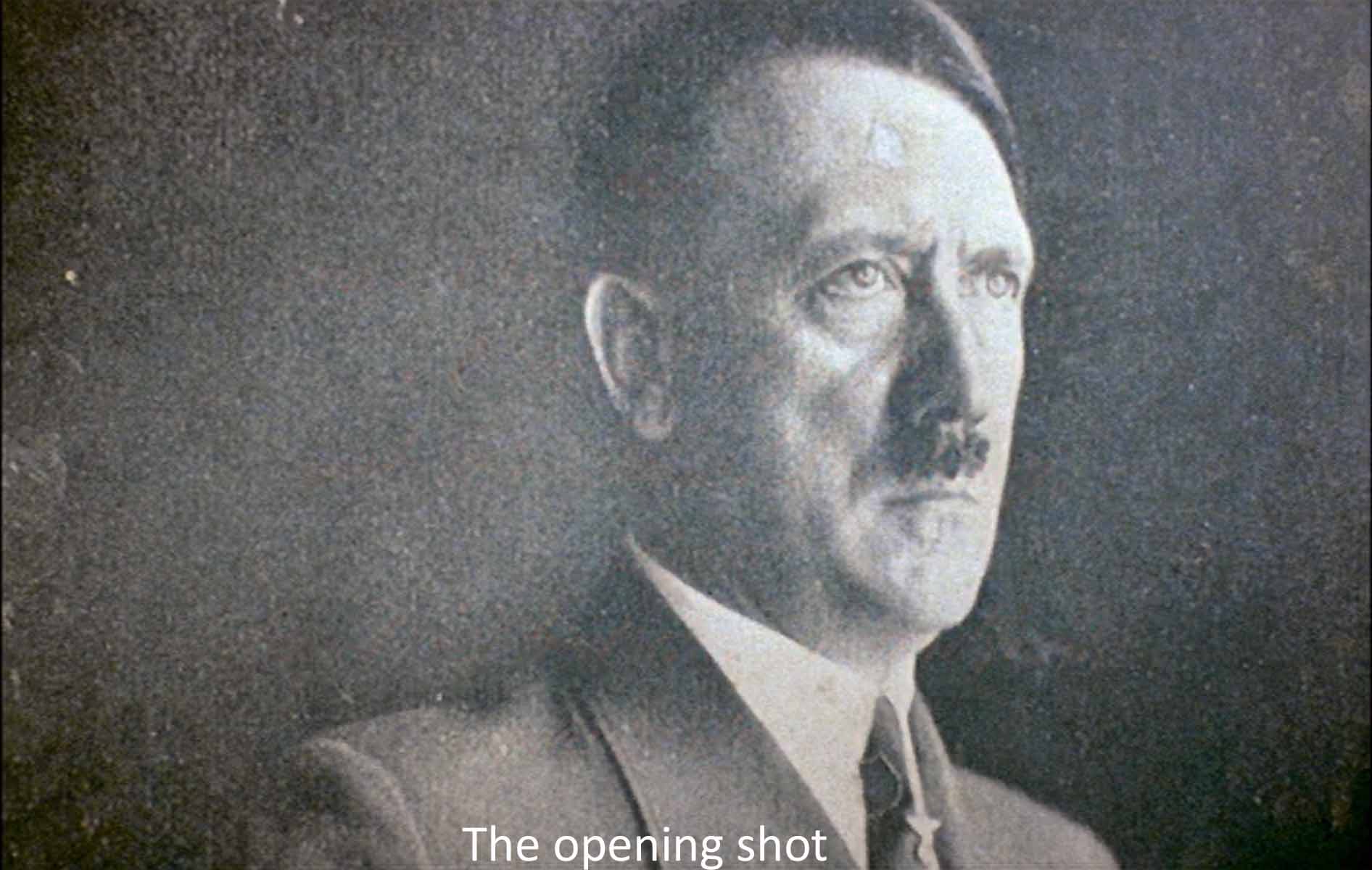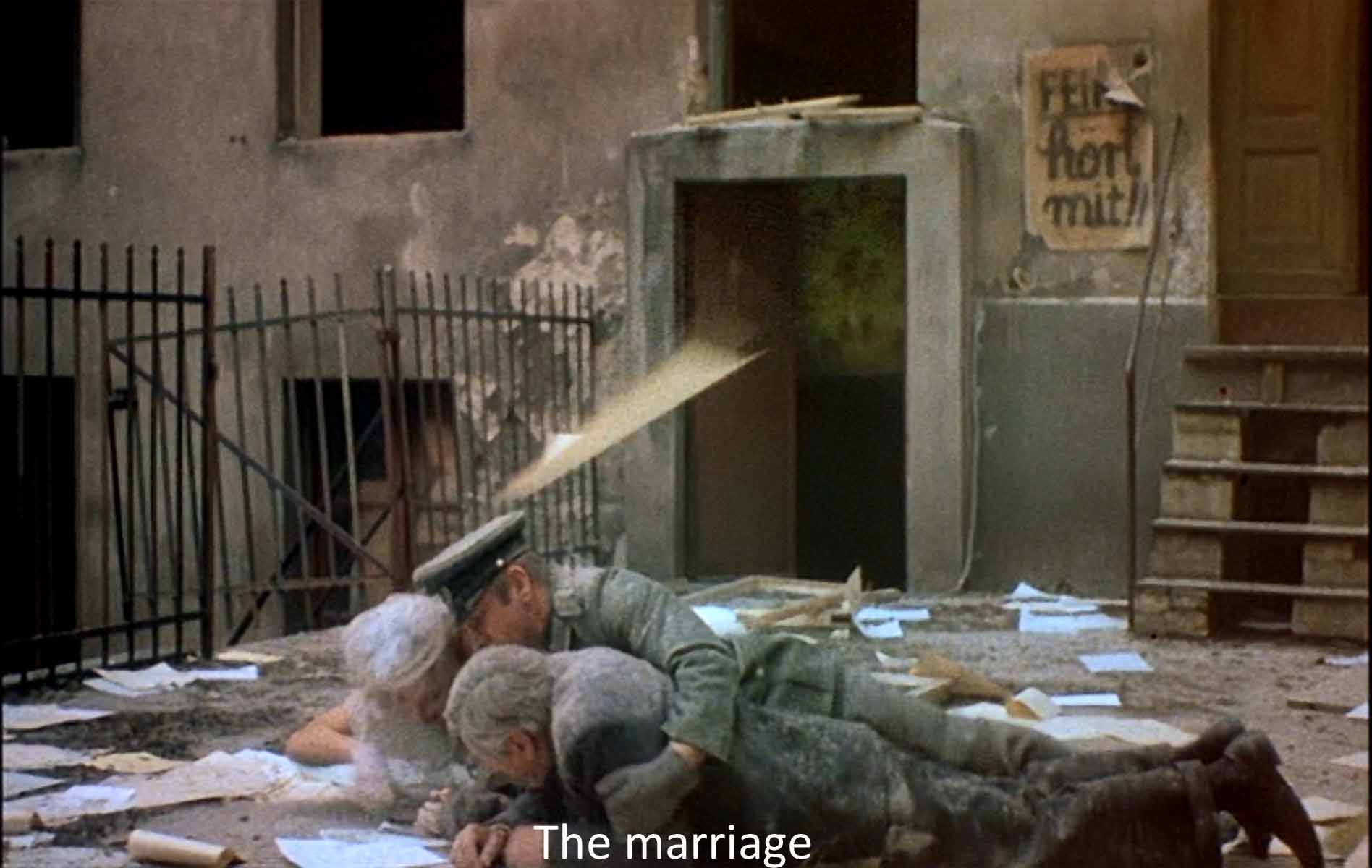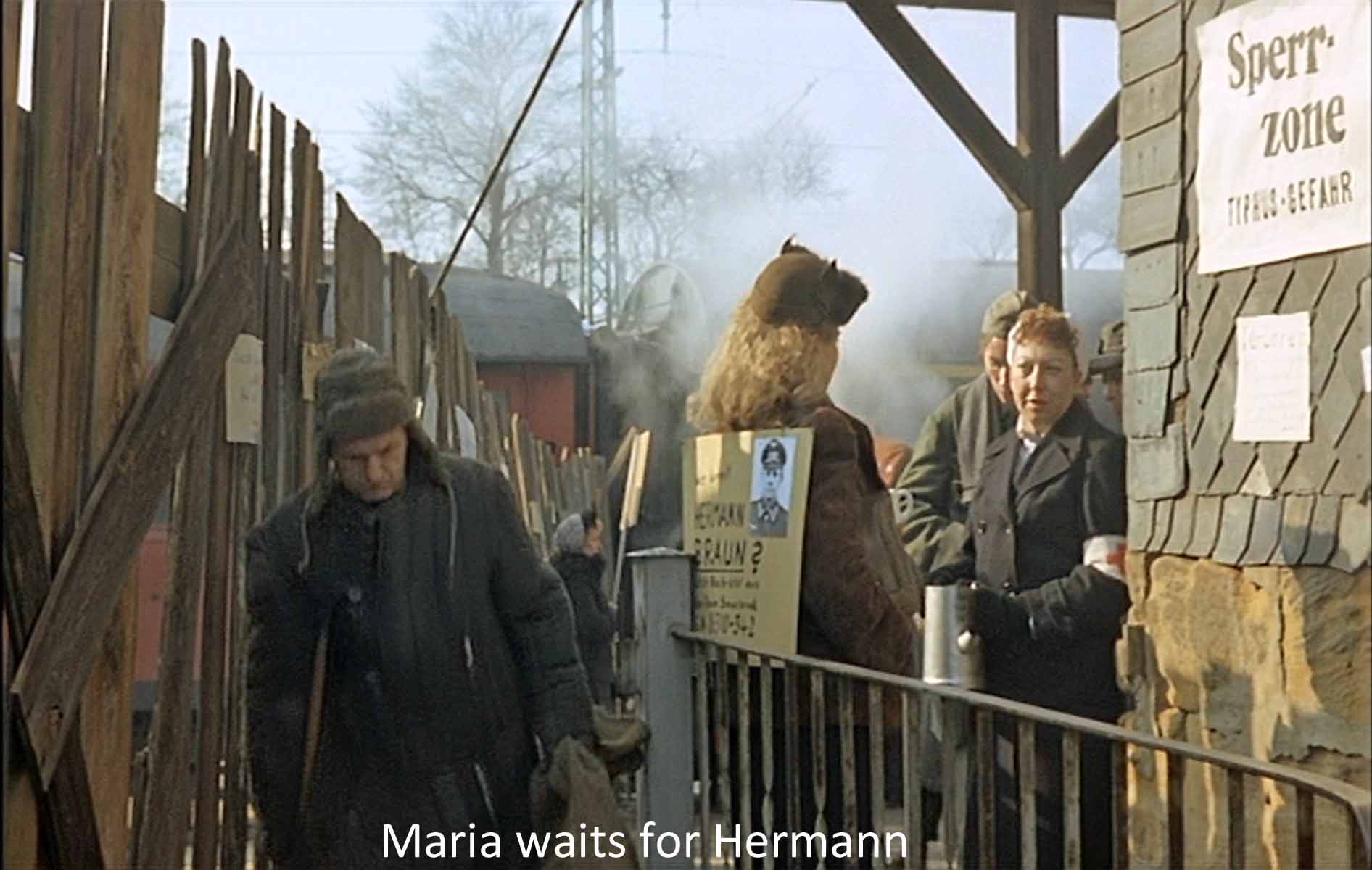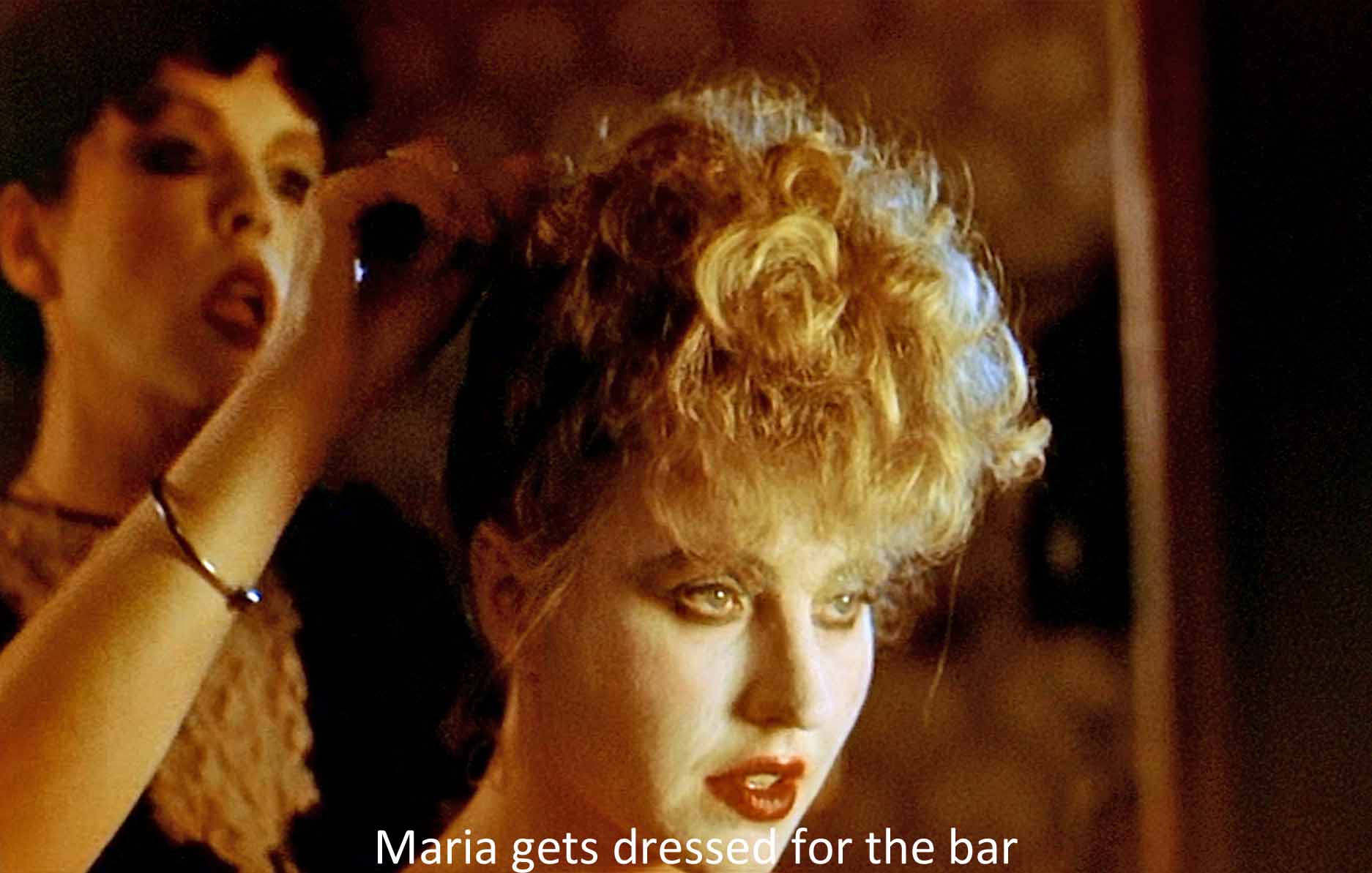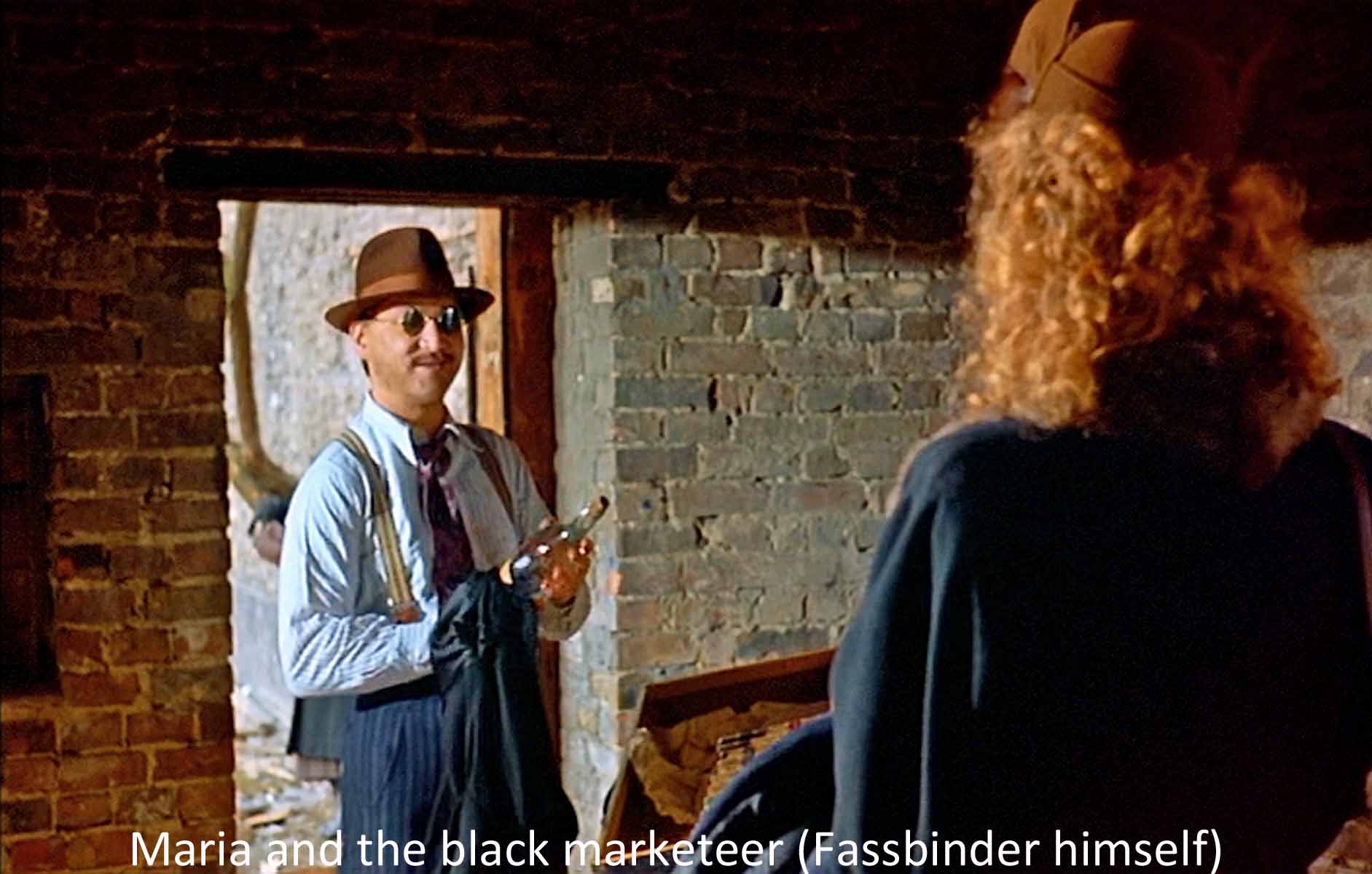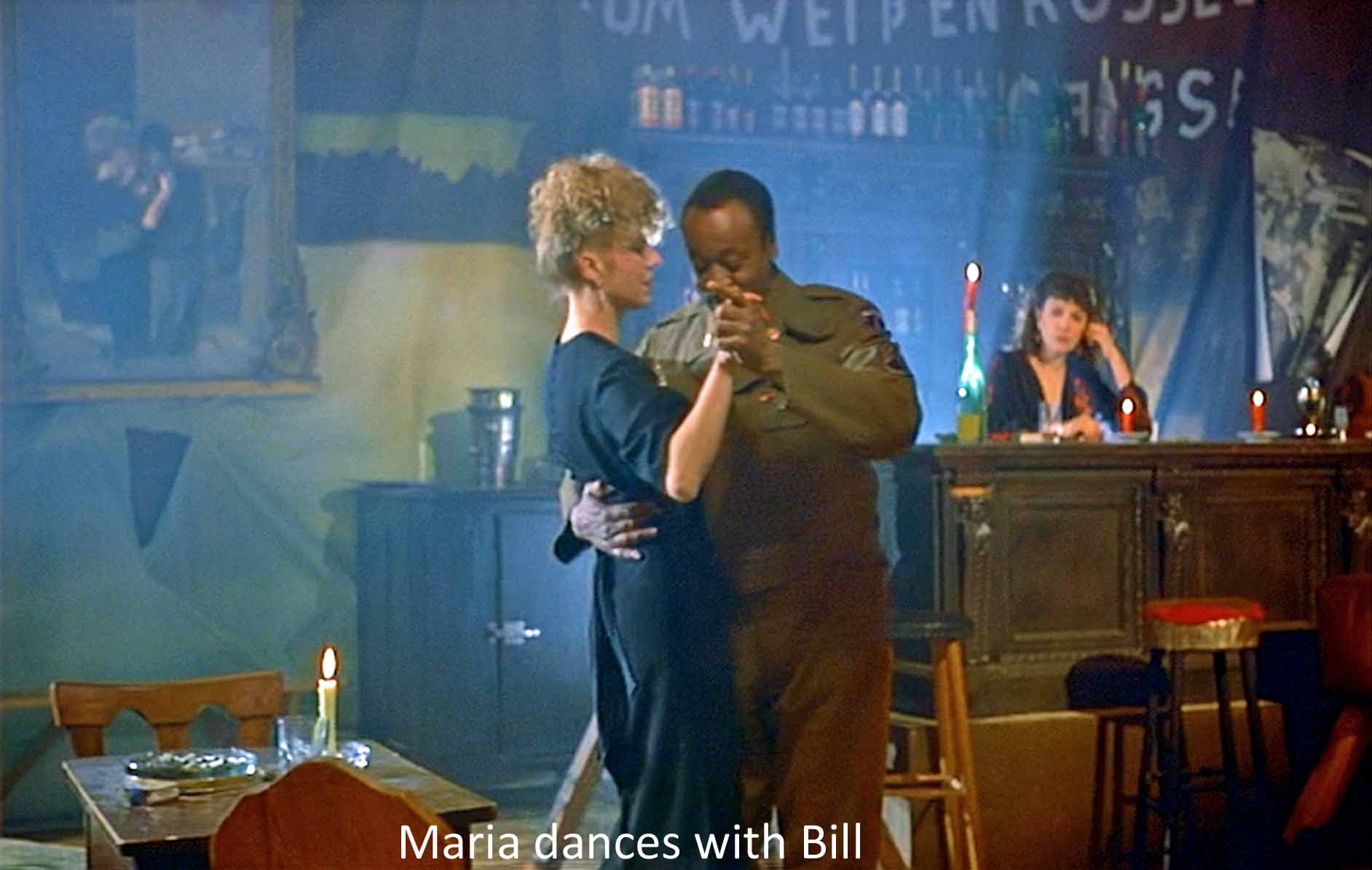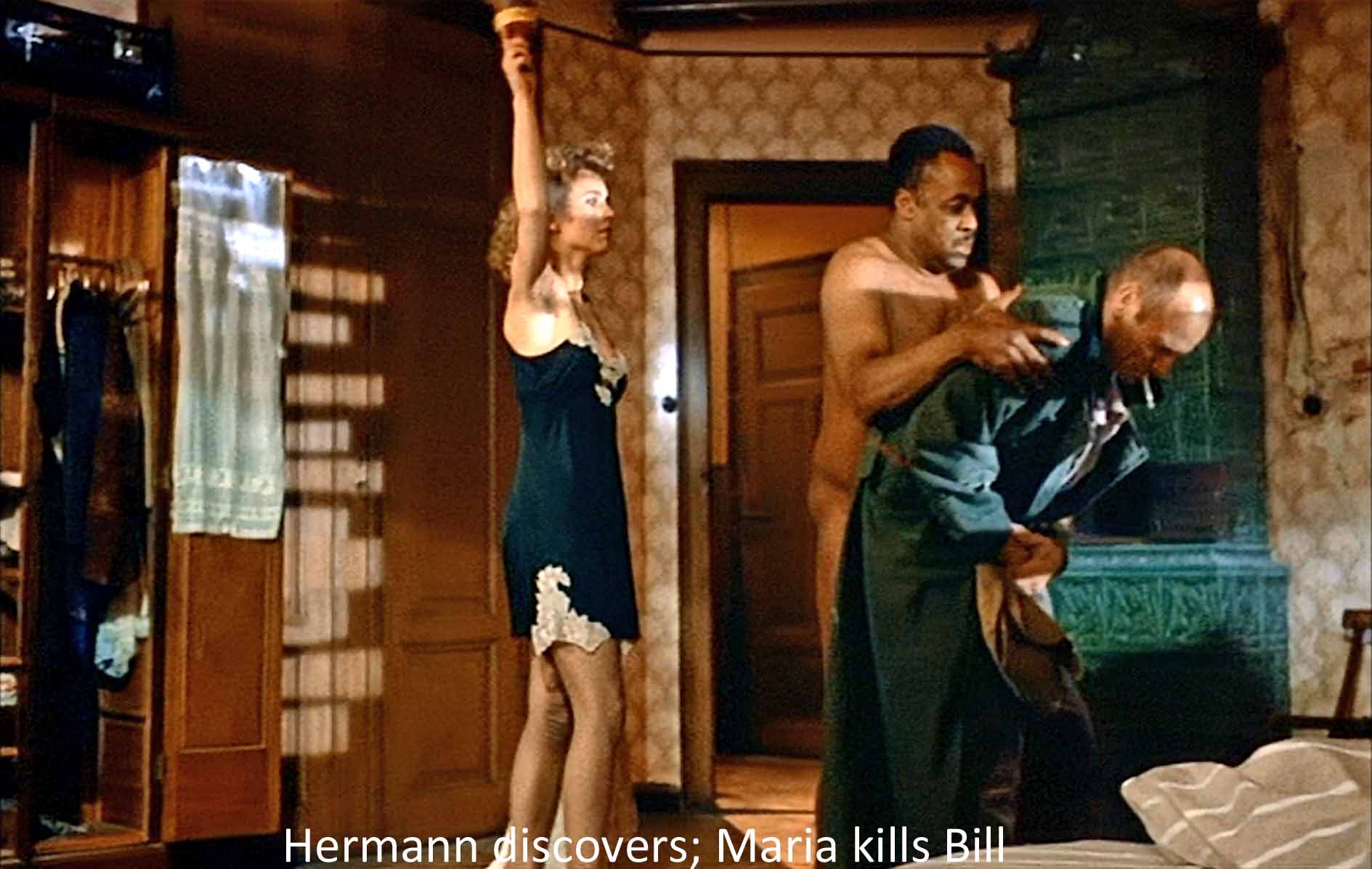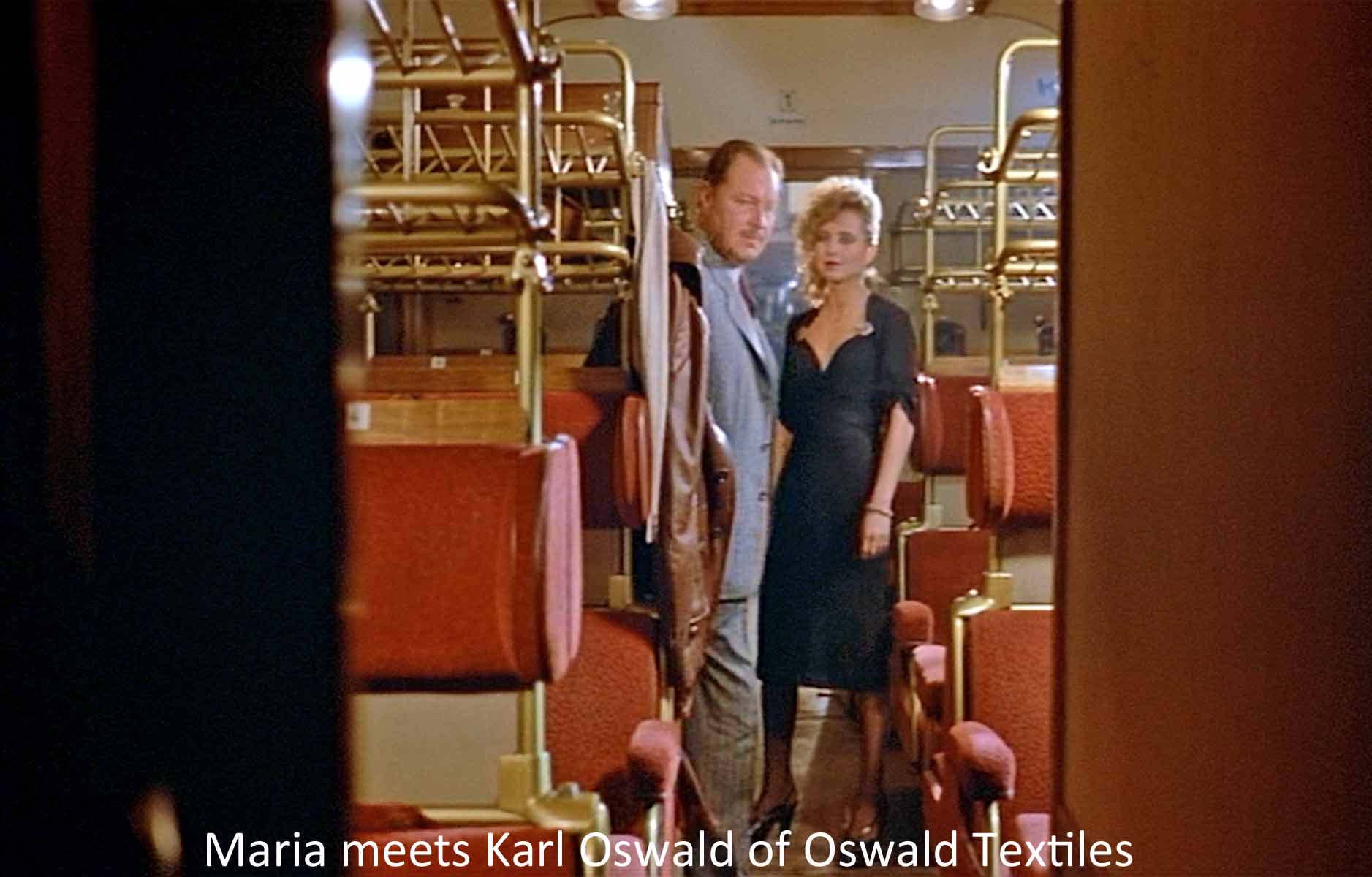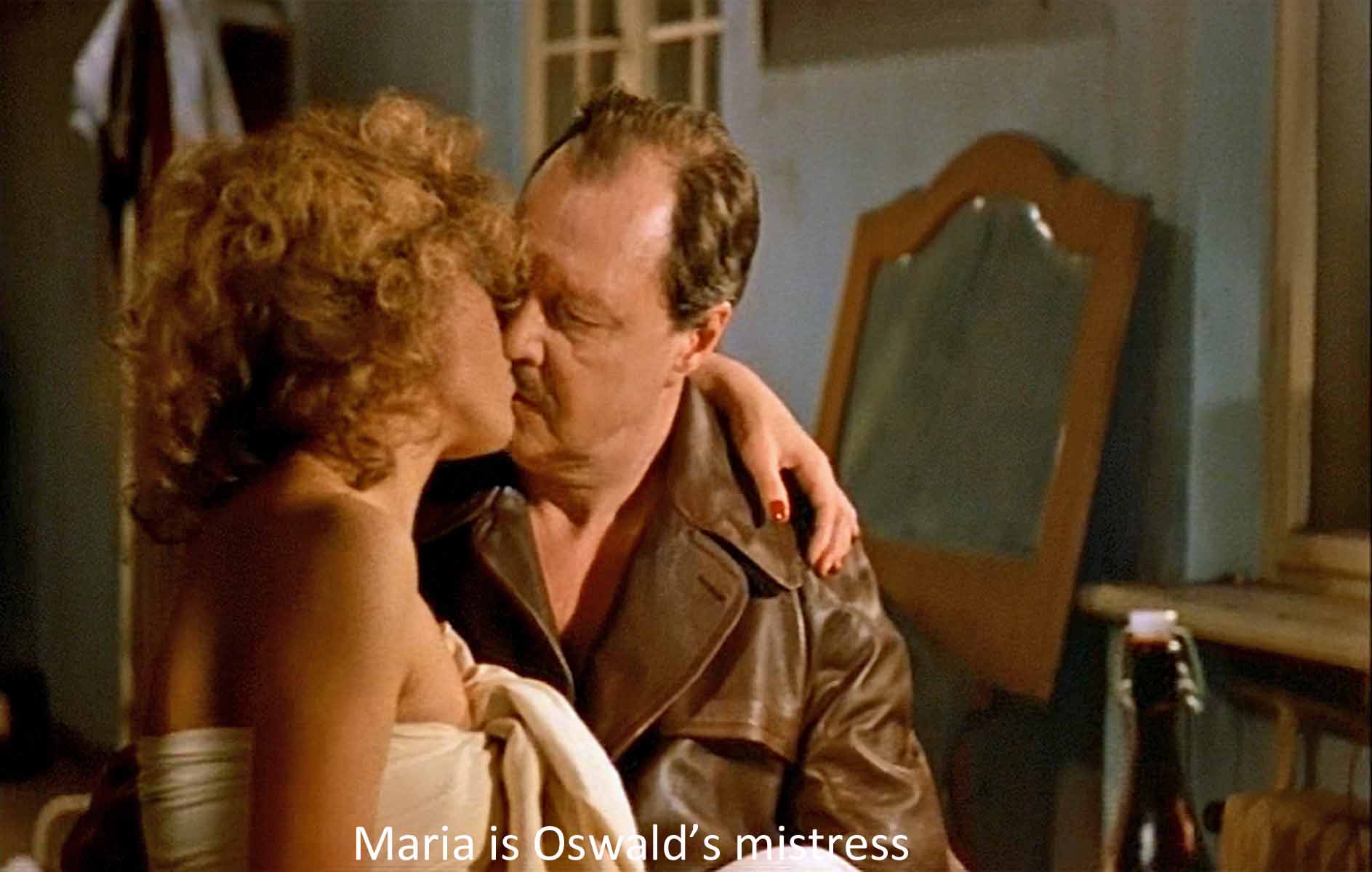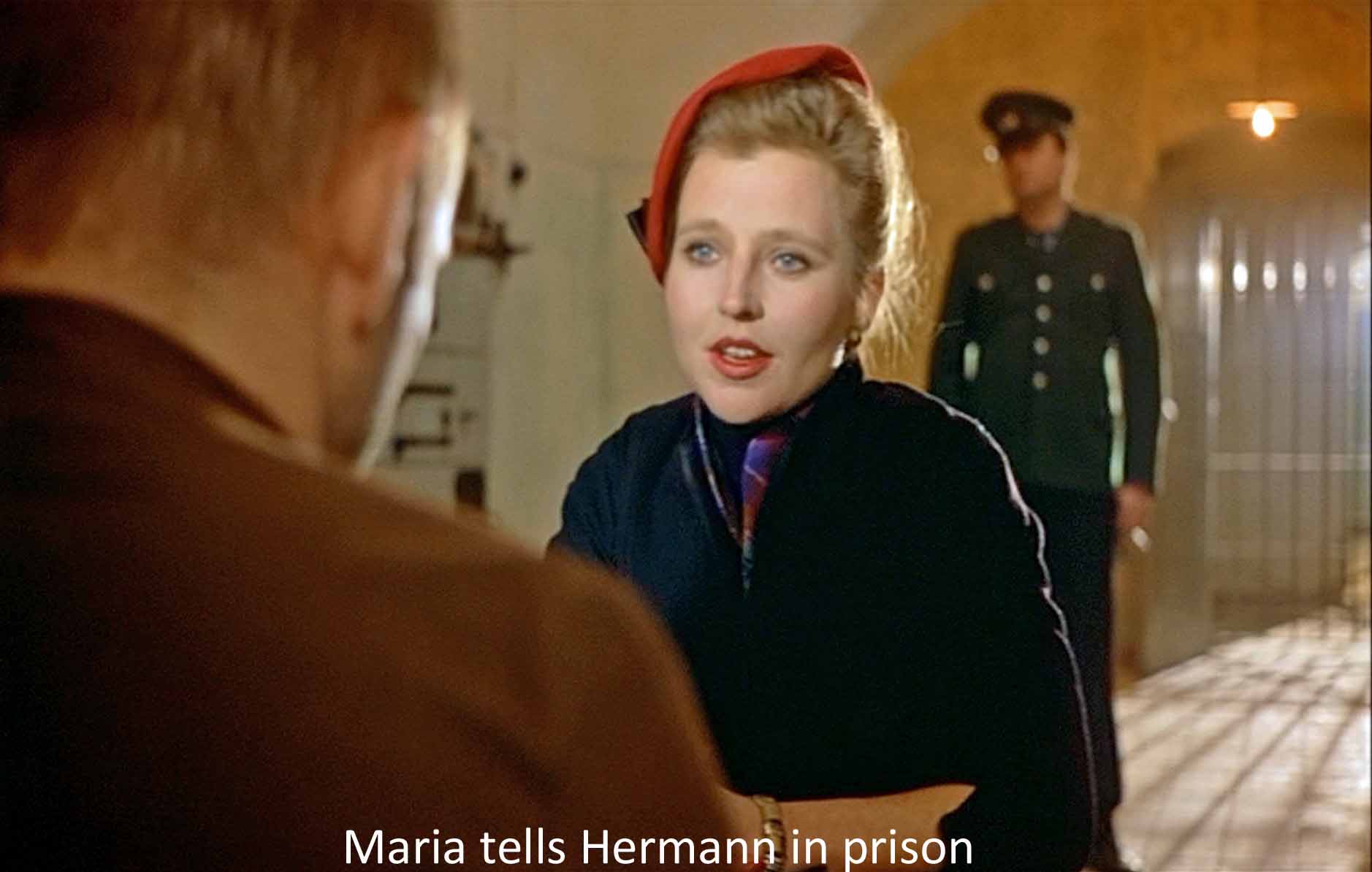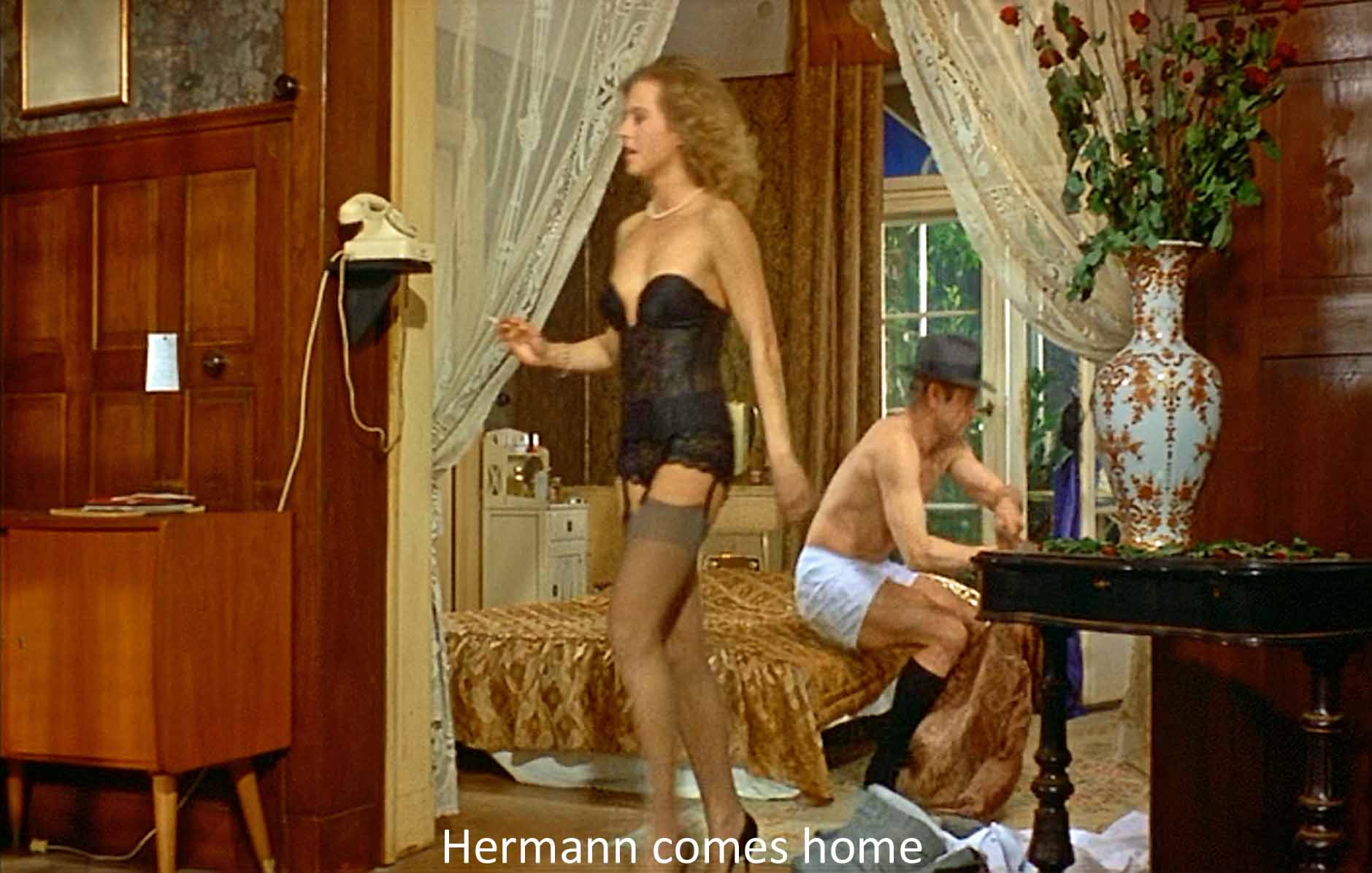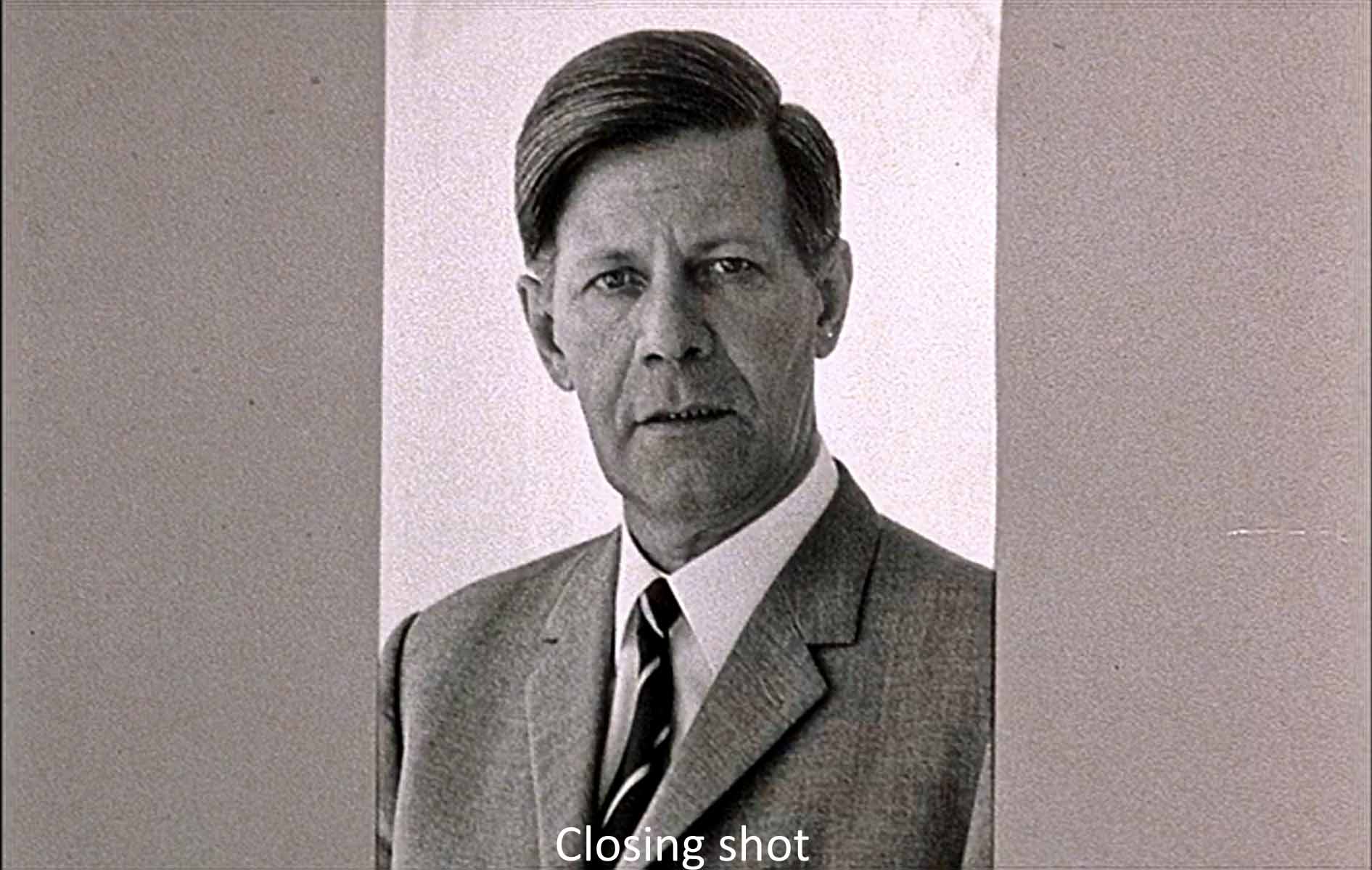Some marriage! The bride and groom were together for half a day and a whole night. Then they were separated for nine years of Russian POW camp, infidelities, deceptions, even murder, followed by more prison, then by a secret agreement between lover and husband. But through it all Maria Braun remained faithful to her idea of their marriage. Does that work? Being faithful to an idea? Isn’t that what Germans did from 1933 to 1945?
Rainer Werner Fassbinder was the wild man of the New German Cinema, wild in his politics, his personal life, and his workaholic pace—and talent—for making films. The Marriage of Maria Braun was his most successful film in terms of box office, and it put him on the international circuit of festivals and awards—and critical analyses.
The Marriage of Maria Braun is the first in Fassbinder’s “BRD trilogy,” BRD meaning Bundesrepublik Deutschland or what we in the U.S. usually called “West Germany.” That is surely one of Fassbinder’s major themes, a hard-boiled sneer at the Wirtschaftswunder, the so-called German economic miracle, the recovery after World War II to the point where Germany is again the strongest nation in Europe, able to coerce smaller nations (like Greece in 2015) into doing its bidding. Fassbinder’s attack comes with a subtler attack on the bourgeois habit of delaying gratification. And Fassbinder is as always feminist. Fassbinder’s heroine, Maria Braun (wonderfully played by Hanna Schygulla, Fassbinder’s favorite actress) uses the men she meets the way men usually use women.
The film begins with a bang, an Allied bomb that disrupts Maria’s marriage to Herman Braun (Klaus Löwitsch). After half a day and a whole night, he goes off to war and is reported missing, then dead. But Maria clings to her idealized marriage even as she works as a bar girl, serving American G.I.s. She begins an affair with an African-American soldier Bill (George Byrd), who supplies cigarettes and stockings, the currency of Germany immediately postwar. She becomes pregnant. As she and Bill are making love, Hermann appears. After he takes time to light up, the two men fight. Maria hits Bill on the head, killing him. At her trial, she dismisses the affair with Bill, saying she really loves her husband. He, in turn, touched by her loyalty, says that he is the one who killed the G.I. and is sent to prison.
Bill’s baby having died, Maria begins her quest to make a moneyed life for herself and Hermann. On a train, she craftily picks up a wealthy industrialist, Karl Oswald (Ivan Desny). She impresses him with her brains and energy, and he makes her his trusted assistant. She in turn makes him her lover, all the time maintaining to herself that she is truly married and in love with Hermann, now in prison. She begins making piles of money, preparing for his release—and I’ll stop there. I’ll just say that the film ends, as it began, with an explosion.
Fassbinder’s feminism consists in making Maria as tough as they come. She shuts up with a string of obscenities a drunken African-American G.I. on the train where she meets Oswald. “Where did you learn to speak English like that?,” he asks. “In bed,” she says. Once hired, she manipulates Oswald into giving her more and more money. But she fails to recover love with Hermann. The critical cliché is that she has gotten wealth but become cold and heartless and value-free in the process, and this is what happened to West Germany in its “economic miracle.” The same holds for her beloved Hermann. He and Oswald made a secret deal in which, in effect, he sold his love for Maria. When he finally returns to her, after Oswald has died, he is rude to her. He never takes his hat off in the deluxe house she has gotten them. He unconcernedly wears one of Oswald’s silk robes. She prances around her fancy house in her fancy undies, and they begin to make love, but they are interrupted. He remains cold, and she learns, when the will is read, of her husband’s deal with Oswald.
Maria too serves Fassbinder’s political theme. As many critics have pointed out, she stands allegorically for West Germany. She too was conquered, destroyed, and reconstructed.
Fassbinder signals his political concern from the outset. The first thing we see in this film is a picture of Hitler in the local registry office presiding over the marriage of Maria and Hermann Braun. The last thing we see are a succession of negative photographs of the postwar German chancellors, with the exception of socialist Willi Brandt, who Fassbinder thought encouraged the kind of self-examination of the Nazi past the others avoided. Why negatives? Because these are the real thing, dark, shady, not the dignified portraits of a political campaign. And the last who turns positive? He’s the one you see now, Helmut Schmidt, “now” being 1978 when Fassbinder shot this film. These portraits occur after the story is over. They are, in the critical term, “extra-diegetic.” They have nothing to do with the filmed story. They tell us this is the director speaking in his own voice.
After the war, ordinary Germans and politicians found comfort in a myth.
Most Germans were not Nazis, indeed resented the Nazi elite as a bunch of thugs who had taken over their country. The German public knew nothing of the Holocaust and other atrocities. The rank-and-file German soldiers fought World War II simply to save Germany. “We” suffered during the war just as the victims of Nazism did. The occupation of Germany in 1945 was not a defeat but a liberation.
Fassbinder hated this lie and hated the politicians who sustained it. Them he portrays in those dark, extra-diegetic negatives. And he treats harshly those characters in Maria Braun who march up the economic stairway blithely ignoring the unspeakably ugly past.
They include not only Maria and Hermann, but Oswald who, half-French, was able to spend the Hitler years in France. Fassbinder is like ordinary Germans in regarding this as a kind of cowardice. Oswald was safely enjoying the money his factory made while other Germans were suffering.
As with those photographic negatives, Fassbinder used the sound track throughout to undercut the clothes and food that stand for economic progress in the pictures. The sound track conveys the political goings-on that control the characters. Notable are two radio broadcasts we overhear in which Adenauer first proclaims that Germany will never re-arm and later tells us how necessary it is for Germany to re-arm. Maria vomits during the latter broadcast, while in the foregound an unconcerned couple has foreplay.
Fassbinder provides an even more extreme example in the closing moments of the film. Hermann, ignoring Maria, is listening to the title match in the 1954 World Cup. Germany is playing the favorite, Hungary, and in the last moments the German goalie turns away a shot, and the game is over. Germany has won, and the announcer gleefully screams, “Deutschland ist wieder weltmeister,” Germany is again master of the world (or world champion). Germans saw this win (with its Hitlerian phrasing) as restoring Germany to international standing and respectability. And then comes the explosion that destroys everything Maria Braun has built up, including Hermann.
To me that explosion puts a period to a third theme of Fassbinder’s, the folly of what I’ll call futurism. To the bourgeoisie, and Fassbinder despised the bourgeoisie, one of the great virtues is the ability to delay gratification. We spend long hours in school, so that we can spend long hours in college, so that we can spend long hours at a job, so that we can perhaps enjoy a family and a comfortable retirement. The “American dream” is one version of this idea, as was the dream Hitler sold to the German people, of a “thousand-year Reich.” Maria works at her job with Oswald and makes love to him with some enjoyment to herself, yes, but always with the thought of building a future for herself and Hermann. And that future accidentally blows up. (Some critics say she blows it up intentionally, but I don’t think you can justify that.)
Either way, though, Fassbinder is pointing to the folly of living for the future. The present is, after all, what we have. The future is pie in the sky in the sweet bye-and-bye. The present is real. The future is not. It can easily be lost simply by chance.
Moreover, as Maria demonstrates, living for the future makes for an emotional chill in the present and a contrived warmth in the future should it finally happen. Such an idealized future matters only as long as it is unrealized. And that paradox is represented by the succession of German chancellors, ending with Helmut Schmidt. They sold a “marriage” to the capitalistic U.S. that was supposed to bring great benefits for ordinary Germans.
I’ve developed just three ideas that I think shape this film, and I’m sure you could find many more. (I’ve not mentioned the racial issue, for example, or the destroyed doctor.) I’ve only begun to suggest how rich and complex this film is both for its own historical period and ours. Fassbinder may have been a wild man, but he was also a great artist.
